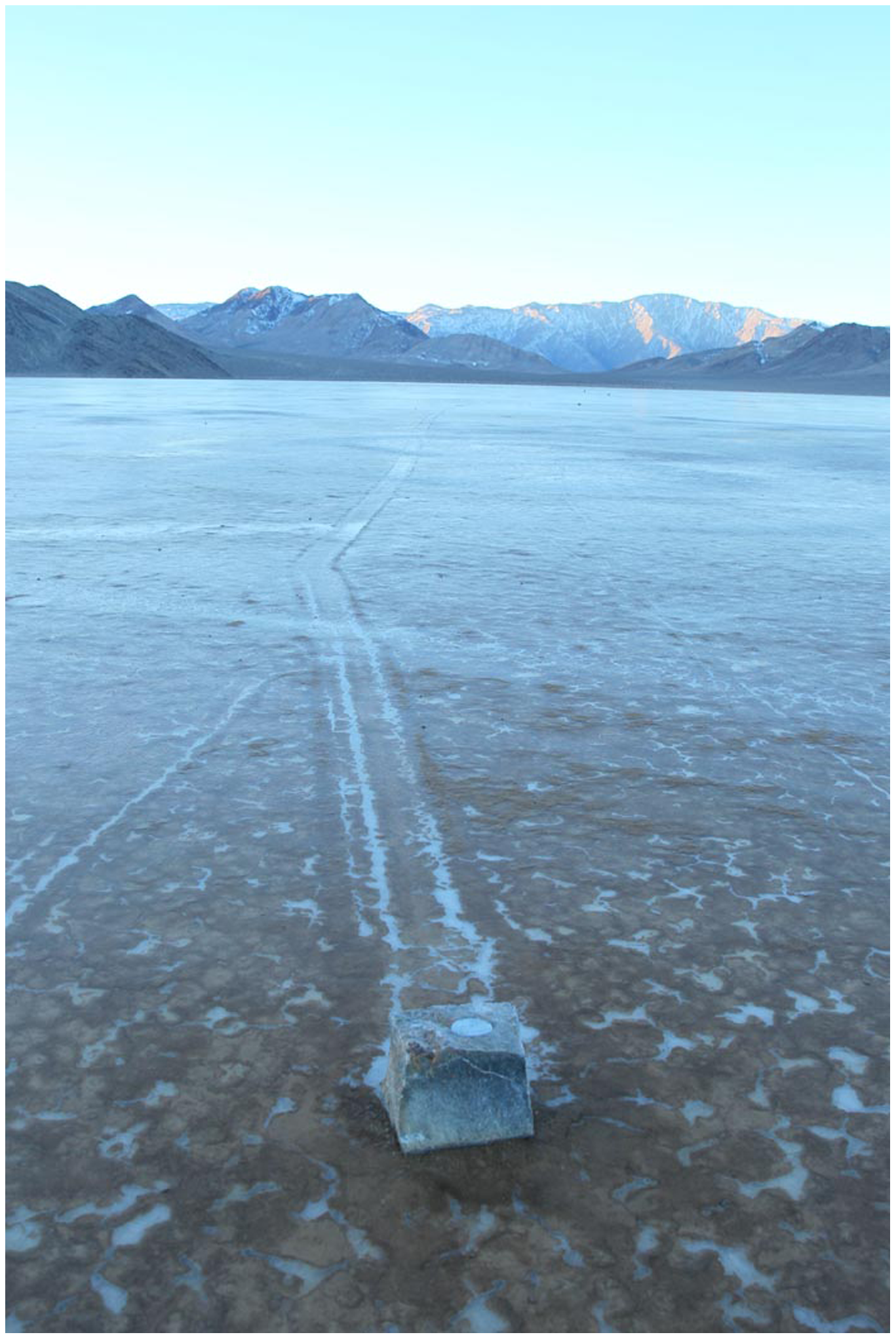We're open daily this holiday! View holiday hours
Science News
Moving Rocks
September 3, 2014
by Molly Michelson

It’s a research assignment that sounds like a practical joke—or an Onion story in the making: watch rocks (many of them weighing hundreds of pounds) move. “The most boring experiment ever,” is how Ralph Lorenz of Johns Hopkins University described the project.
But here’s the thing: for almost 75 years, people have observed mysterious trails made by these rocks in Death Valley. Somehow the rocks move, leaving marks in the dry desert ground that can stretch hundreds of meters. But no one had witnessed the rocks move. I mean, come on—they’re rocks!
It sounds like an episode of the Twilight Zone or X-Files, and scientists proposed many theories about the moving rocks of the dry lake bed at Racetrack Playa—hurricane-force winds, dust devils, slick algal films, or thick sheets of ice. But the real reason remained a mystery until very recently.
In 2011, a team of researchers set up an experiment to determine the cause of the boulders’ migration. Some were just motivated by the mystery; others were curious about desert weather patterns that might provide clues to processes on other planets. They put together equipment and volunteers, but didn’t expect much for a while. They were observing rocks, remember?
The team installed a high-resolution weather station to measure wind gusts and outfitted 15 rocks with custom-built, motion-activated GPS units. (The National Park Service would not let them attach GPS units to native rocks, so they brought in similar rocks from an outside source.) Volunteers repeatedly visited the remote dry lake, quarried the rocks that were fitted with GPS, and maintained custom-made instruments.
Then, in December 2013, Richard Norris, of Scripps Institution of Oceanography, and cousin Jim Norris arrived in Death Valley to discover that a recent rainstorm had covered the playa with a pond of water seven centimeters (three inches) deep. As nighttime temperatures plummeted, the pond froze, forming thin sheets of “windowpane” ice, thin enough to move freely but thick enough to maintain strength. The next day, the ice began to melt and break up into large, floating panels, which light winds could drive across the playa, pushing rocks in front of them and leaving trails in the soft mud below the surface.
“On December 21, 2013, ice breakup happened just around noon, with popping and cracking sounds coming from all over the frozen pond surface,” Richard Norris explains. “I said to Jim, ‘This is it!’
“Science sometimes has an element of luck,” he continues. “We expected to wait five or ten years without anything moving, but only two years into the project, we just happened to be there at the right time to see it happen in person.”
The study was published last week in PLoS ONE.
Image: Mike Hartmann